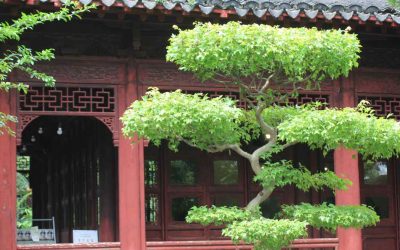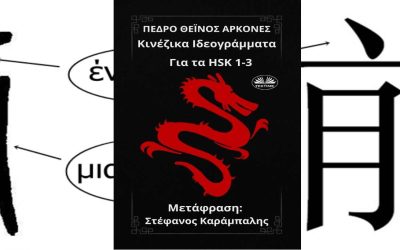The Lost Mythology of Ancient China
Reconstructing the mythology of ancient China is a painstaking task that tries to characterize some legendary figures and situations based only on the few sentences about them found in later works by philosophers and historians. The Classic of Mountains and Seas (Shanhaijing) helps to fill in some gaps, but its cryptic descriptions make it useful mainly for a small number of specialists.
A Lost Book
Much more useful is the Shiben, often translated as the Book of Origins, an ancient Chinese historical and genealogical text dating back approximately to the Warring States period (5th–3rd centuries BCE). The only problem is that the last known copy was lost during the Song dynasty, around 1,000 years ago. What would have been an irreparable loss in another culture has been partially recovered, thanks to China’s scholarly tradition. Over the past centuries, several scholars have attempted to reconstruct it based on references made in other texts that quote or cite it.
Contents of the Shiben
The Shiben is essential for understanding early Chinese history and especially how the ancient Chinese viewed their mythical and cultural origins — including royal genealogies, the beginnings of institutions, and legendary inventions. Among its main sections were the genealogies of kings and royal families, the origins of important feudal states and geographical places, and chronological lists of rulers with approximate dates or time periods.
It integrated legends and events that may have occurred in the distant past into a coherent narrative about the development of Chinese civilization. These reconstructions make the Shiben a key source for studying the historical and mythological worldview of ancient China.
Inventions from the Dawn of China
One of its most fascinating sections deals with the origins of professions, inventions, and techniques, attributing various aspects of cultural progress to their respective mythical inventors. Regardless of whether these claims hold historical accuracy, they are essential knowledge for anyone approaching Chinese culture. For example:
– Cang Jie, a minister of the Yellow Emperor, created Chinese characters by observing the tracks left by birds and animals. Legend says that when he finished, wheat rained down from the sky and spirits wept, because knowledge had entered the world — bringing both power and danger.
– Meng Tian, ignoring chronological consistency, was a general of the Qin dynasty who is credited with perfecting the Chinese brush and the use of ink made from vegetable carbon.
– Shen Nong, or the «Divine Farmer», taught humanity to cultivate grains, use plows, and identify medicinal plants. He is considered the father of agriculture and traditional Chinese medicine.
– Shaohao was the one who began domesticating animals for fieldwork and human service.
– You Chao Shi, meaning “He of the Nest”, had the idea of building elevated houses to protect people from wild animals and natural elements — a crucial step toward a sedentary lifestyle.
– Leizu, wife of the Yellow Emperor, is credited with discovering sericulture after observing silkworms making cocoons on mulberry leaves.
– Fu Xi, among other inventions, is attributed with creating fishing nets and the system of trigrams that later evolved into the I Ching (Yijing).
– Ling Lun, a musician of the Yellow Emperor, is said to have created the first Chinese musical scales based on bird songs.
– Gao Yao, a justice minister under Emperors Yao and Shun, laid the foundations of Chinese penal law and used a mythical unicorn (xiezhi) to detect lies and resolve disputes.
– Xi Zhong is credited with inventing wheeled carts — a major improvement in land transportation.
About me: I have spent 30 years in China, much of the time traveling and studying this country’s culture. My most popular research focuses on Chinese characters (Chinese Characters: An Easy Learning Method Based on Their Etymology and Evolution), Matriarchy in China (there is a book with this title), and minority cultures (The Naxi of Southwest China). In my travels, I have specialized in Yunnan, Tibet, the Silk Road, and other lesser-known places. Feel free to write to me if you’re planning a trip to China. The agency I collaborate with offers excellent service at an unbeatable price. You’ll find my email below.
Last posts
The Primitivist: The Taoist Philosopher of Simplicity
The Primitivist: The Taoist Philosopher of Simplicity The Taoist classic Zhuangzi is not the work of a single philosopherAnyone who takes a closer look at the foundational works of Taoism will quickly discover that the book known as Zhuangzi was not entirely written...
Zhang Yongzheng, the master of deluding reality
Zhang Yongzheng, the master of deluding reality Reality is an illusion, say Buddhist texts. And each of Zhang Yonggzheng's (Gansu, 1978) works plays with this concept to remind us again and again that there is no immutable reality but a fluid universe of forms that...
The book Hanzi for HSK 1-3 now available in Greek language
The book “Hanzi for HSK 1-3” now available in Greek language This April, the translation of my book Hanzi for HSK 1-3 has been published in the main digital bookstores in Greece. The Greek version of this book, from the pen of Stefanos Karampalis, has been one of...
Portrait of a Mandarin in 1800
Portrait of a Mandarin in 1800 This was the year in which a very interesting book was published, which through 60 portraits, tried to show some aspects of life in China to the western public. A book now in the public domain, from which we adapted "A Mandarin of...
The art of laying out gardens among the Chinese
The art of laying out gardens among the Chinese In the 1740s, William Chambers travelled on three trading voyages to China with the Swedish East India Company. He was the first European to study Chinese architecture methodically. In a book published in 1757, Designs...
The secret treasure of ancient Chinese art
The secret treasure of ancient Chinese art China has a fabulous artistic treasure hidden from the eyes of the public and specialists. It is her best kept treasure, because given the dispersion of its location, the difficulty of conservation and even evaluation and...










